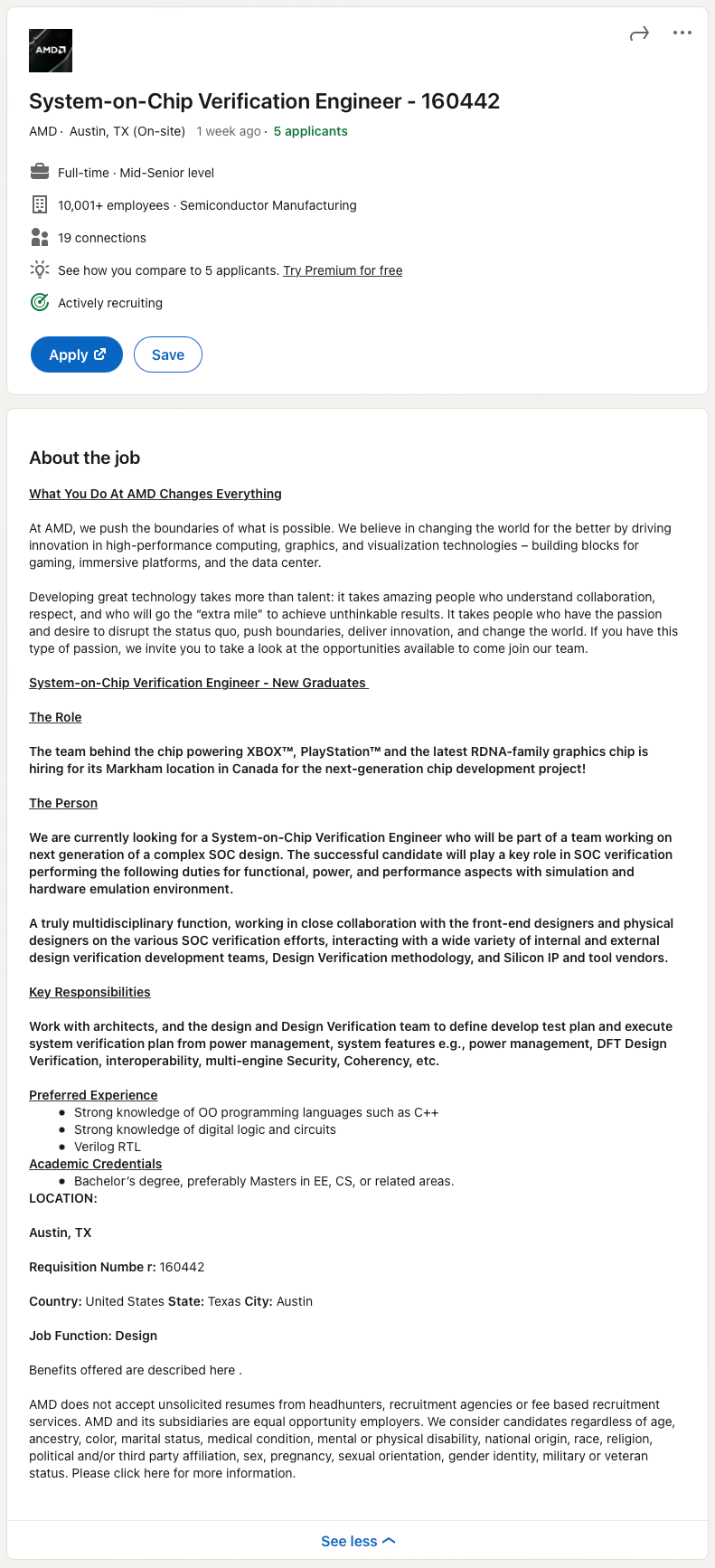AMD's Console and GPU Team Hiring for Next-Generation SoCs
Development of next-generation Xbox 5, PlayStation 6 console SoCs may be underway.
AMD's Markham, Ontario-based office is looking for a system-on-chip verification engineer to work on a next-generation complex SoC. Developers from Canada typically work on numerous projects involving graphics processors, including GPUs and console SoCs, which may mean that AMD is already gathering engineers for next-generation consoles from Microsoft and Sony. Or is it? We have some doubts.
"The team behind the chip powering Xbox, PlayStation, and the latest RDNA-family graphics chip is hiring for its Markham location in Canada for the next-generation chip development project," AMD's job posting over at LinkedIn reads.
In AMD's classification, all of its APUs, CPUs, GPUs, and custom SoCs are designated as system-on-chips, which is correct from an engineering point of view since modern processors carry a lot more than just application-specific circuits. Therefore, given the historical specialization of the Markham, Ontario-based office (former headquarters of ATI Technologies, a developer of GPUs and console SoCs), we are indeed talking about the development of two types of SoCs — GPU SoCs and console SoCs.
Meanwhile, since the job posting mentions Xbox and PlayStation SoCs ahead of GPUs, this clearly leads to speculation that AMD is already working on system-on-chips for Microsoft's Xbox Next (5th Generation Xbox) and Sony's PlayStation 6. However, this assumption may be incorrect.
SoC verification procedures involve verification of design compliance with planned specifications (which includes performance, thermal, electrical, and other characteristics) before the design is finalized and sent out for manufacturing. SoC verification process is a relatively late phase of chip development, so if AMD is looking for a verification engineer for a console SoC now, it means that this SoC has been in development for two or three years and is due to be mass-produced in 2024.
It usually takes about four to five years to build an all-new CPU or GPU from scratch. So we seriously doubt that Microsoft and/or Sony ordered development of its next-generation console SoCs in 2019 or even 2020 without hearing feedback about their next generation hardware (PlayStation 5 and Xbox Series X|S) from game developers. Even if AMD is looking for an engineer to work on a console SoC now, that console SoC will hardly power a next-generation console but rather a mid-cycle update machine. Perhaps, Microsoft and/or Sony want to offer improved version(s) of their XBX and PS5 system(s) in circa 2024 ~ 2025 or just radically cut down their costs, which is why they need a new SoC.
Meanwhile, keeping in mind that in AMD's classification a GPU is also an SoC, the Markham, Ontario-based office may just be looking for a verification engineer who is going to work on a chip due in 2024 (RDNA 4, anyone?).
Get Tom's Hardware's best news and in-depth reviews, straight to your inbox.
"We are currently looking for a System-on-Chip Verification Engineer who will be part of a team working on next generation of a complex SOC design," the job posting continues. "The successful candidate will play a key role in SOC verification performing the following duties for functional, power, and performance aspects with simulation and hardware emulation environment."

Anton Shilov is a contributing writer at Tom’s Hardware. Over the past couple of decades, he has covered everything from CPUs and GPUs to supercomputers and from modern process technologies and latest fab tools to high-tech industry trends.
